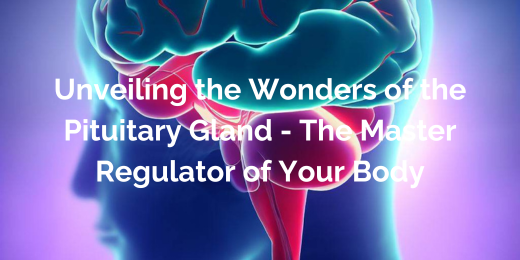Role of the pituitary gland
The pituitary gland, often referred to as the “master gland,” plays a crucial role in the intricate web of our body’s functions. Nestled deep within the brain, this small yet mighty gland serves as a command centre, orchestrating the release of hormones that regulate various bodily processes. From growth and reproduction to metabolism and stress response, the pituitary gland holds the key to maintaining our overall well-being.
In this captivating journey, we will delve into the fascinating world of this remarkable organ, exploring its anatomy, functions, and the vital role it plays in keeping our body in harmony. Brace yourself for an enlightening exploration of the pituitary gland and the wonders it performs behind the scenes.
The Anatomy of the Pituitary Gland
The pituitary gland, situated at the base of the brain, may be small in size, but its significance cannot be overstated. Comprising two distinct parts, the anterior and posterior pituitary, this gland possesses a unique structure that enables it to carry out its vital functions. The anterior pituitary, also known as the adenohypophysis, produces and releases essential hormones that govern growth, reproduction, and metabolism. Hormones produced by the anterior pituitary play a crucial role in regulating metabolism in the human body, emphasizing the gland’s significance.
On the other hand, the posterior pituitary, or neurohypophysis, stores and releases hormones produced by the hypothalamus, such as oxytocin and vasopressin, which regulate childbirth, breastfeeding, and water balance. Together, these two divisions collaborate seamlessly, exemplifying the remarkable role of the pituitary gland in maintaining hormonal balance and ensuring the proper functioning of numerous bodily processes.
Functions of the Pituitary Gland
The pituitary gland, often hailed as the master regulator of the body, assumes a vital role in maintaining the delicate balance of our physiological processes. Situated at the base of the brain, this remarkable gland secretes a myriad of hormones that act as messengers, orchestrating and coordinating various bodily functions. From stimulating growth and development to regulating metabolism, reproduction, and even stress response, the hormones produced by the pituitary gland exert a profound influence on our overall well-being.
Some notable hormones include growth hormone (GH), which controls growth and cell regeneration, thyroid-stimulating hormone (TSH), responsible for regulating thyroid function, and luteinizing hormone (LH), essential for reproductive health. Through its intricate web of hormonal regulation, the pituitary gland holds the reins, playing a pivotal role in ensuring the harmonious functioning of our complex biological systems.
Disorders and Imbalances
The pituitary gland, with its crucial role in maintaining hormonal balance, can be susceptible to various disorders that can disrupt its normal functioning. Common disorders associated with the pituitary gland include pituitary tumours, which can lead to hormone overproduction or underproduction, and conditions like hypopituitarism and hyperpituitarism.
These disorders can result in a range of symptoms and have far-reaching effects on overall health. Hormonal imbalances caused by pituitary gland disorders can impact various bodily systems, including growth, metabolism, reproductive function, and even emotional well-being.
It is essential to recognize and address these disorders promptly, as proper diagnosis and treatment are key to restoring hormonal equilibrium and mitigating the adverse effects on overall health. Understanding the role of the pituitary gland and its disorders is crucial in promoting optimal health and well-being.
Diagnostic Techniques and Treatment Options
When it comes to assessing the role of the pituitary gland, diagnostic methods play a crucial part in uncovering any potential disorders or imbalances. These methods often involve a comprehensive evaluation, including blood tests to measure hormone levels, imaging techniques such as MRI or CT scans to visualize the gland’s structure, and sometimes even stimulation tests to assess hormone response. Once a pituitary gland disorder is diagnosed, a range of treatment options becomes available.
The choice of treatment depends on the specific disorder and its underlying cause. Treatment options may include medication to restore hormonal balance, surgical interventions to remove tumours or repair structural abnormalities, radiation therapy to target tumours, or a combination of these approaches. The goal is to address the root cause of the disorder and restore the pituitary gland’s proper functioning, ultimately improving overall health and well-being.
Conclusion
In conclusion, the pituitary gland holds immense importance as the master regulator of the body, orchestrating a symphony of hormonal balance and coordination. This remarkable organ, nestled at the base of the brain, plays a pivotal role in governing various bodily functions, from growth and metabolism to reproduction and stress response. Its vital role cannot be overstated, as it ensures the harmonious functioning of our complex biological systems.
The role of the pituitary gland lies not only in its anatomical structure but also in the profound impact it has on our overall health and well-being. Understanding and appreciating this small yet mighty gland sheds light on the intricate mechanisms that keep our bodies in balance, and highlights the significance of maintaining its optimal functioning.



